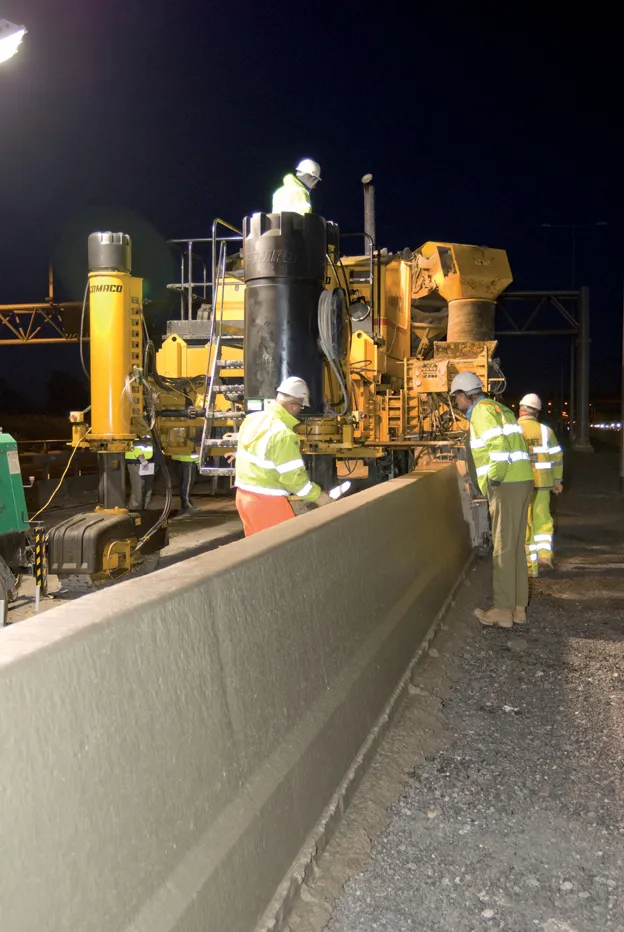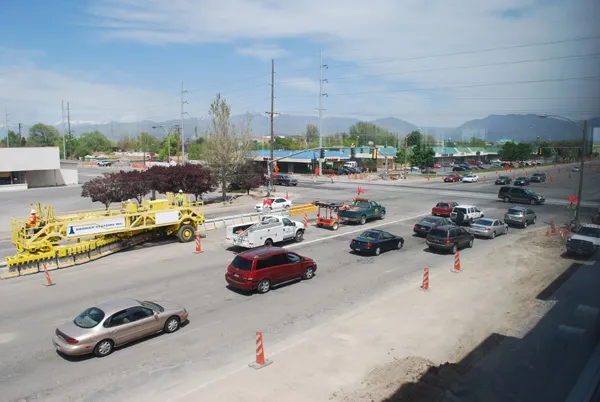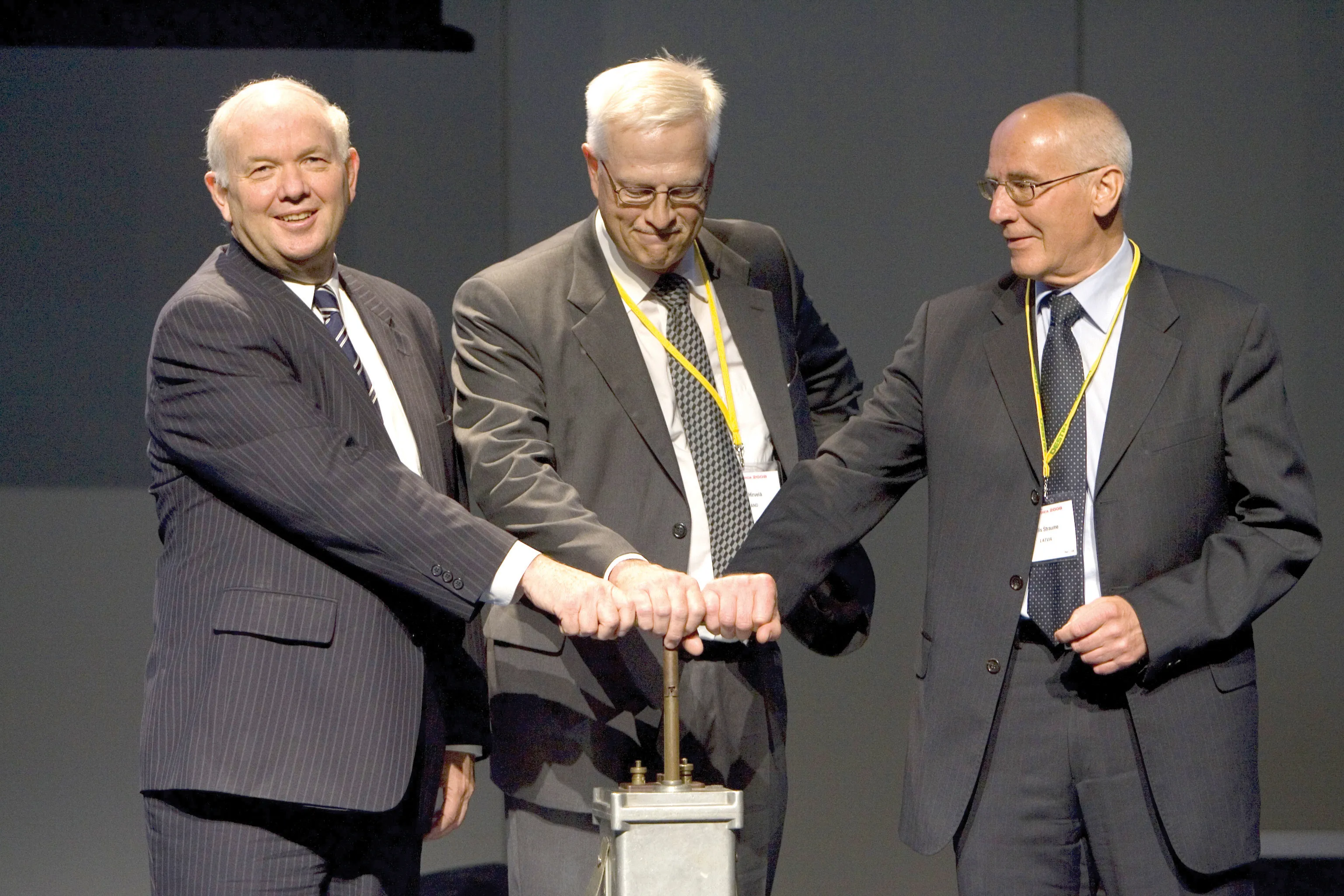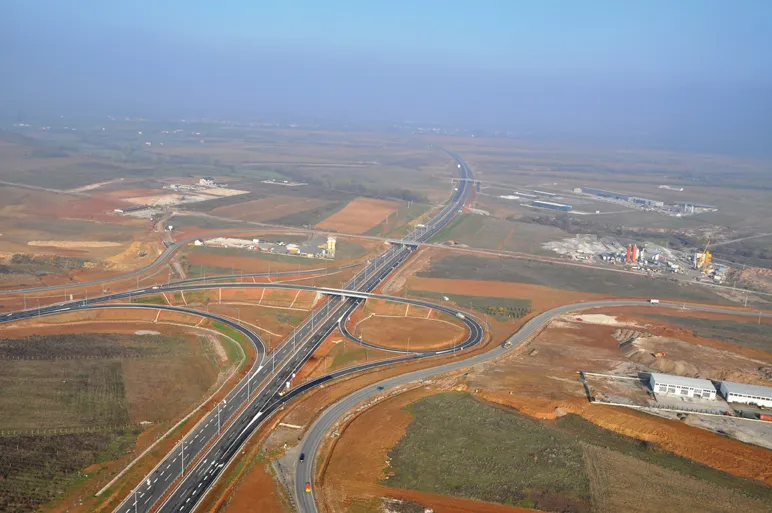Concrete barriers offer a highway safety solution - Mike Woof writes. Concrete safety barriers are being installed on many of Europe's major highways, particularly for use as centre lane dividers. The strength and durability of concrete barriers can help reduce the risk of cross over accidents, one of several topics raised at a conference in Brussels on concrete highway barriers organised by the European Concrete Paving Association, EUPAVE.
The conference was opened by Yves Deceoene of the IRF's Belgian ex
July 12, 2012
Read time: 6 mins

RSS
The conference was opened by Yves Deceoene of the2462 IRF's Belgian executive committee who commented, "In general there has been a decrease in accidents in the last few years and the authorities are happy with this improvement, but one fatality is one fatality too many. Road infrastructure, along with other factors, has an influence on about 28% of accidents. Further development of the road infrastructure, its environment and its equipment must not be neglected in order to reduce the number of accidents or to minimise their impact on the drivers and their passengers."
Deceoene said that many accidents happen on particular sections of road. And
should a major accident occur at a section of highway where no safety measures have been installed, the result would be far more severe.
According to Deceoene, using concrete offers a long term road safety solution and he said, "Concrete safety barriers are very durable." He pointed out that the first section of concrete safety barrier installed in Belgium was constructed in 1977 and is still in use today. In addition Deceoene said that concrete barriers not only help to provide a safe infrastructure but also meet the construction industry's growing need for environmental sustainability by offering a long life and by being made of recyclable materials.
Providing an effective safety solution for Europe's road network is crucial to plans to reduce the fatality rate and Luc Rens, managing director of EUPAVE, said, "The most dangerous places are where there are no road restraint systems installed."
Rens referred to six road accidents that occurred in Belgium the weekend prior to the conference, which left seven dead and 10 injured (one in particular was a cross-over accident on a highway with no central barriers that resulted in three deaths). He commented, "At least four of those lives could have been saved by effective road restraints."
European directives on construction products are now long established, with the directive regarding CE marking for construction products having been agreed in 1988 and the EN1317 directive for road restraint systems having been established in 1998. However, Rens said, "In many countries it's still a struggle to get them applied."
Rens explained that the EN1317 standards are based on performance covering containment levels, impact severity and working width. The tests include an array of passenger cars, light trucks, buses and large trucks weighing from 900kg-30tonnes, to establish a range of different performance categories. There are also categories for barrier displacement and deformation following the test impacts and he added, "It is important to know the criteria."
Some changes have been made to the testing procedures and Rens said that there is no longer a need for a sensor to measure head deceleration of a dummy during the test. He explained that the containment classes are to be further bolstered by the introduction of new L classes, these will offer even better capabilities than the current H4A and H4B categories. Rens also said that new rules may allow tests to be carried out on certain barrier products, without needing to test the entire product line-up from that particular range.
Further changes may be due and Rens said, "There is some discussion over whether tests should be carried out on city buses or on coaches."
He explained that city buses generally have a lower centre of gravity than coaches, making them less susceptible to rollover accidents, which could make a substantial difference to the results of crash tests. There is also some discussion on the types of car to be used in tests, because various models can exhibit different impact characteristics and there is a possibility of a standard car developed for testing as a result. Rens added, "There is also the issue of the cost of testing."
In short, he explained that more testing increases costs, which reduces the amount of barrier being installed overall and he said that the Finnish authorities have suggested an intermediate partial test process. And he explained, "This choice is not only given by requirements but by price, maintenance and lifecycle. How many km can we make safe with the budget we've got?"
Computer modelling tools are being developed for testing barriers and Rens commented, "Accidents never happen the way the tests are carried out but this is a good tool."
Motorcyclist protection is another issue that needs to be further addressed, although concrete barriers offer better protection than some other barrier types in this regard. Rens said, "There are a lot of dangerous features and obstacles next to the road for motorcyclists. We do support extra protection for vulnerable road users."
A new amendment is being developed for the EN1317 standard that will allow improved protection and Deceoene said that when the new motorcycle requirement is introduced, barriers will have to comply as well as continuing to meet requirements for cars, buses and trucks. However, this new amendment has been delayed. Aline Delhaye, general secretary of the Federation of European Motorcyclist Associations (2906 Fema) said that these delays are costing lives and commented that in Spain, 39 motorcyclists were killed in accidents involving collisions with barriers during May 2009 alone.
One delay to the new amendment resulted from a further test being requested by the German authorities involving a motorcycle and rider striking a barrier while still upright. However Delhaye commented that the primary focus is on getting an amendment introduced and that once this is in place, the regulations concerning motorcycle safe barriers can be gradually improved. However, Spain, Italy and Belgium have moved ahead of any Europe-wide legislation on this issue and have installed barriers and crash cushions at known danger points to improve safety for motorcyclists.
Sustainability is an issue of increasing importance in the construction sector and EUPAVE believes that concrete barriers perform well in this regard.
Dr Bryan Magee of the British In-situ Concrete Paving Association (3170 Britpave), said, "Product lifecycles are very important. We feel the durability and low maintenance needs of a concrete step barrier set a positive trend. Over a 50-year life, the energy profile of a concrete step barrier is much lower.
“Concrete is fully recyclable and the low working width of a concrete barrier means that less land is taken up."
RSS
Concrete barriers offer a highway safety solution - Mike Woof writes.
Concrete safety barriers are being installed on many of Europe's major highways, particularly for use as centre lane dividers. The strength and durability of concrete barriers can help reduce the risk of cross over accidents, one of several topics raised at a conference in Brussels on concrete highway barriers organised by the European Concrete Paving Association, EUPAVE.The conference was opened by Yves Deceoene of the
Deceoene said that many accidents happen on particular sections of road. And
should a major accident occur at a section of highway where no safety measures have been installed, the result would be far more severe.
According to Deceoene, using concrete offers a long term road safety solution and he said, "Concrete safety barriers are very durable." He pointed out that the first section of concrete safety barrier installed in Belgium was constructed in 1977 and is still in use today. In addition Deceoene said that concrete barriers not only help to provide a safe infrastructure but also meet the construction industry's growing need for environmental sustainability by offering a long life and by being made of recyclable materials.
Providing an effective safety solution for Europe's road network is crucial to plans to reduce the fatality rate and Luc Rens, managing director of EUPAVE, said, "The most dangerous places are where there are no road restraint systems installed."
Rens referred to six road accidents that occurred in Belgium the weekend prior to the conference, which left seven dead and 10 injured (one in particular was a cross-over accident on a highway with no central barriers that resulted in three deaths). He commented, "At least four of those lives could have been saved by effective road restraints."
European directives on construction products are now long established, with the directive regarding CE marking for construction products having been agreed in 1988 and the EN1317 directive for road restraint systems having been established in 1998. However, Rens said, "In many countries it's still a struggle to get them applied."
Rens explained that the EN1317 standards are based on performance covering containment levels, impact severity and working width. The tests include an array of passenger cars, light trucks, buses and large trucks weighing from 900kg-30tonnes, to establish a range of different performance categories. There are also categories for barrier displacement and deformation following the test impacts and he added, "It is important to know the criteria."
Some changes have been made to the testing procedures and Rens said that there is no longer a need for a sensor to measure head deceleration of a dummy during the test. He explained that the containment classes are to be further bolstered by the introduction of new L classes, these will offer even better capabilities than the current H4A and H4B categories. Rens also said that new rules may allow tests to be carried out on certain barrier products, without needing to test the entire product line-up from that particular range.
Further changes may be due and Rens said, "There is some discussion over whether tests should be carried out on city buses or on coaches."
He explained that city buses generally have a lower centre of gravity than coaches, making them less susceptible to rollover accidents, which could make a substantial difference to the results of crash tests. There is also some discussion on the types of car to be used in tests, because various models can exhibit different impact characteristics and there is a possibility of a standard car developed for testing as a result. Rens added, "There is also the issue of the cost of testing."
In short, he explained that more testing increases costs, which reduces the amount of barrier being installed overall and he said that the Finnish authorities have suggested an intermediate partial test process. And he explained, "This choice is not only given by requirements but by price, maintenance and lifecycle. How many km can we make safe with the budget we've got?"
Computer modelling tools are being developed for testing barriers and Rens commented, "Accidents never happen the way the tests are carried out but this is a good tool."
Motorcyclist protection is another issue that needs to be further addressed, although concrete barriers offer better protection than some other barrier types in this regard. Rens said, "There are a lot of dangerous features and obstacles next to the road for motorcyclists. We do support extra protection for vulnerable road users."
A new amendment is being developed for the EN1317 standard that will allow improved protection and Deceoene said that when the new motorcycle requirement is introduced, barriers will have to comply as well as continuing to meet requirements for cars, buses and trucks. However, this new amendment has been delayed. Aline Delhaye, general secretary of the Federation of European Motorcyclist Associations (
One delay to the new amendment resulted from a further test being requested by the German authorities involving a motorcycle and rider striking a barrier while still upright. However Delhaye commented that the primary focus is on getting an amendment introduced and that once this is in place, the regulations concerning motorcycle safe barriers can be gradually improved. However, Spain, Italy and Belgium have moved ahead of any Europe-wide legislation on this issue and have installed barriers and crash cushions at known danger points to improve safety for motorcyclists.
Sustainability is an issue of increasing importance in the construction sector and EUPAVE believes that concrete barriers perform well in this regard.
Dr Bryan Magee of the British In-situ Concrete Paving Association (
“Concrete is fully recyclable and the low working width of a concrete barrier means that less land is taken up."
RSS








